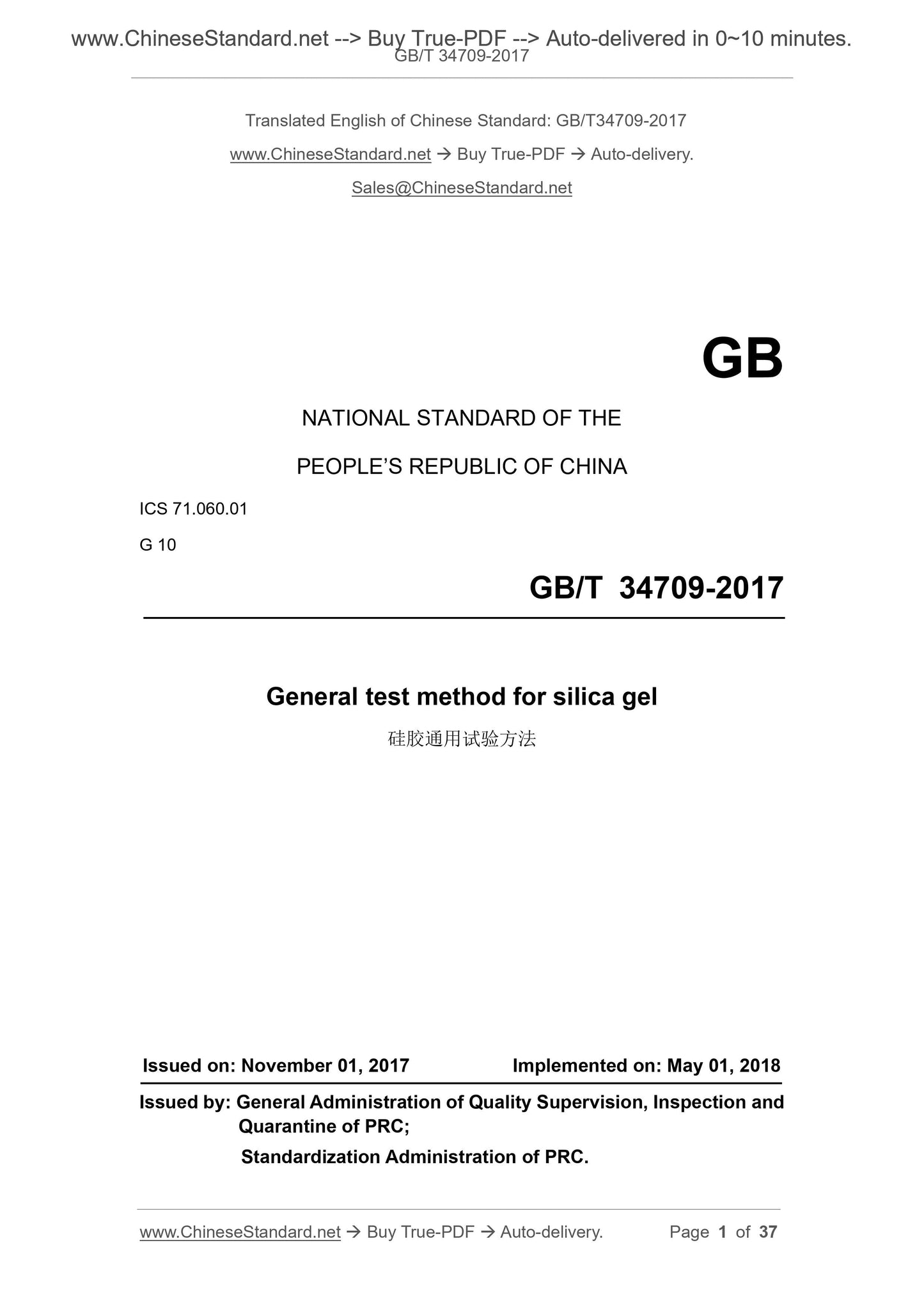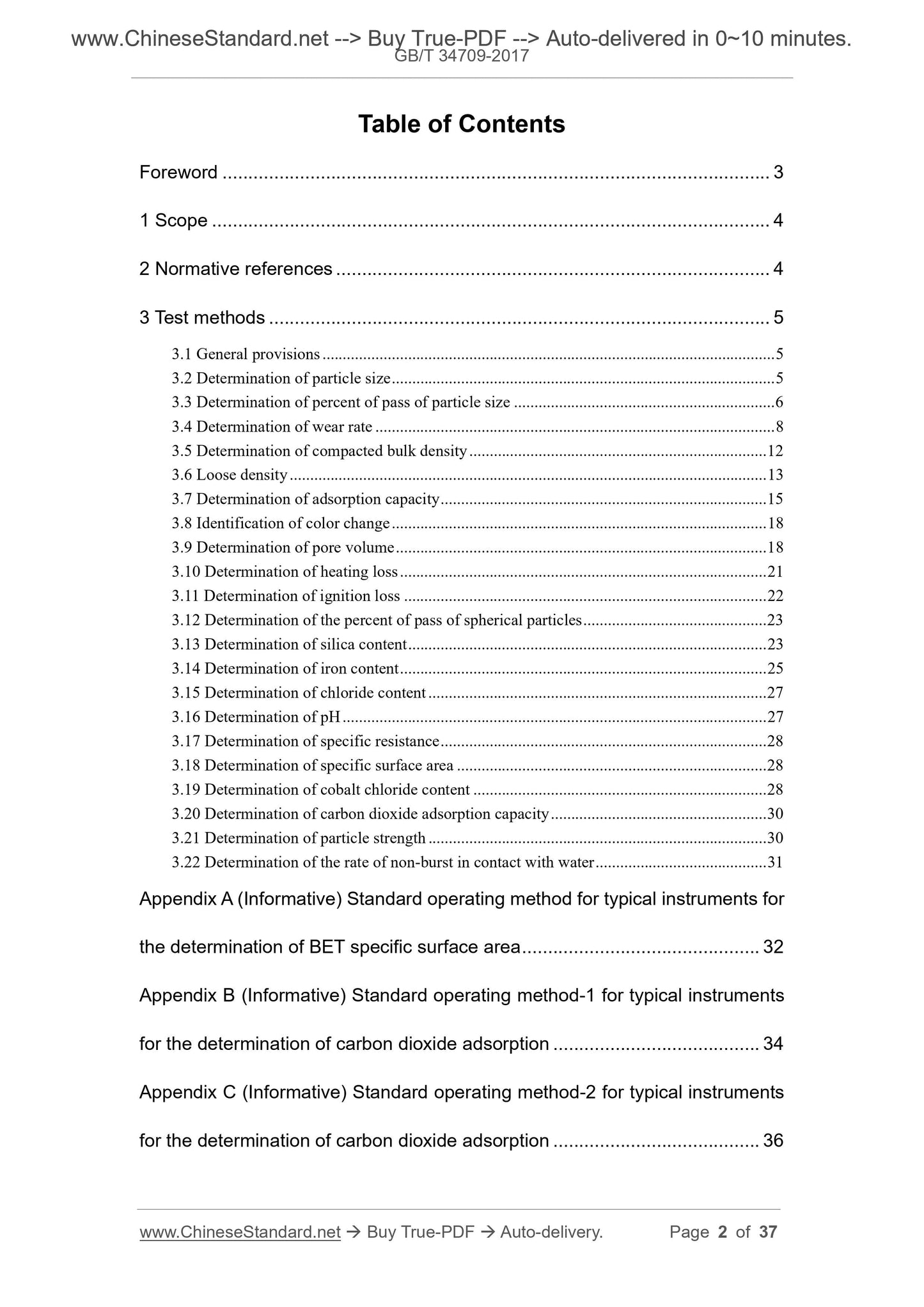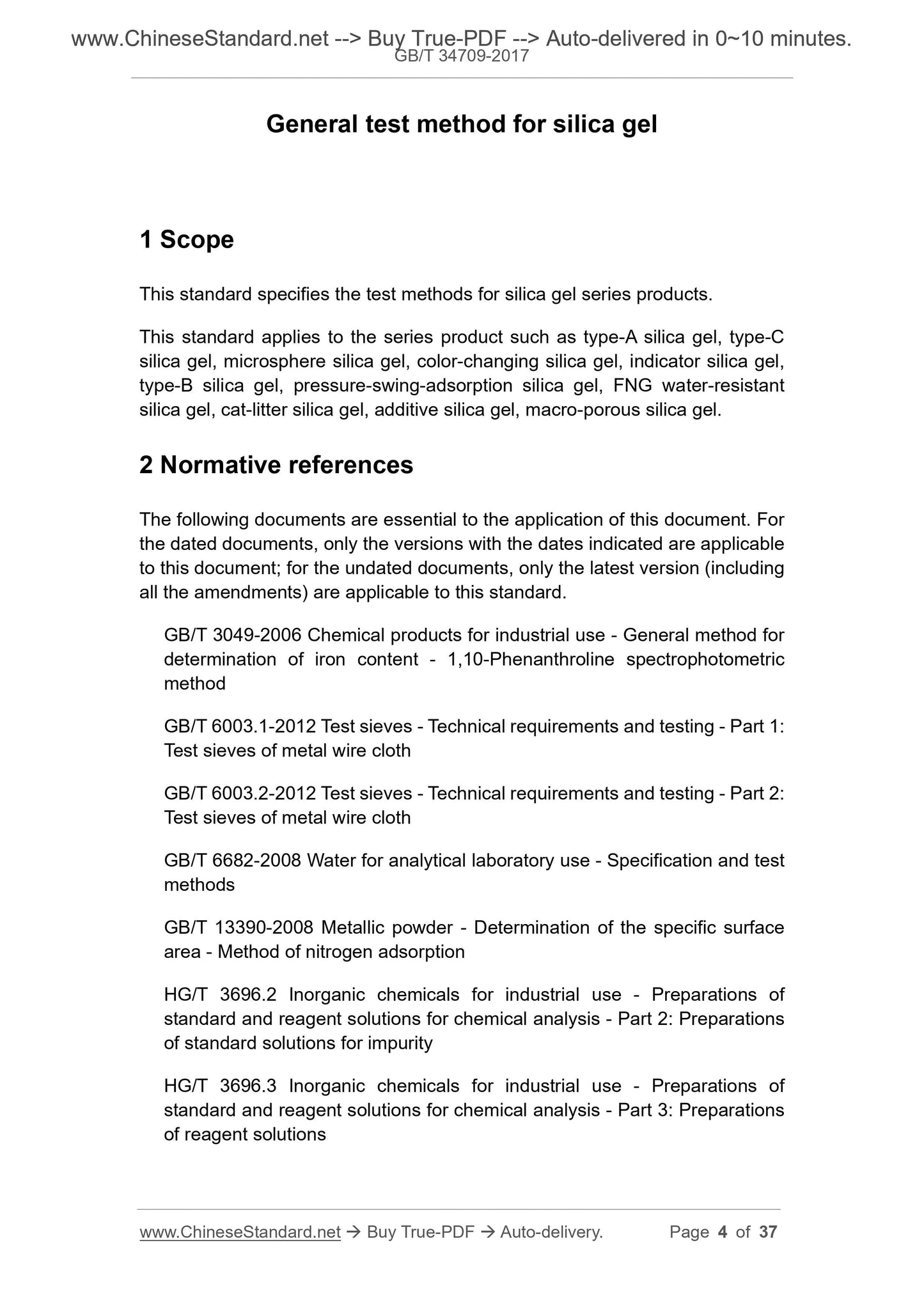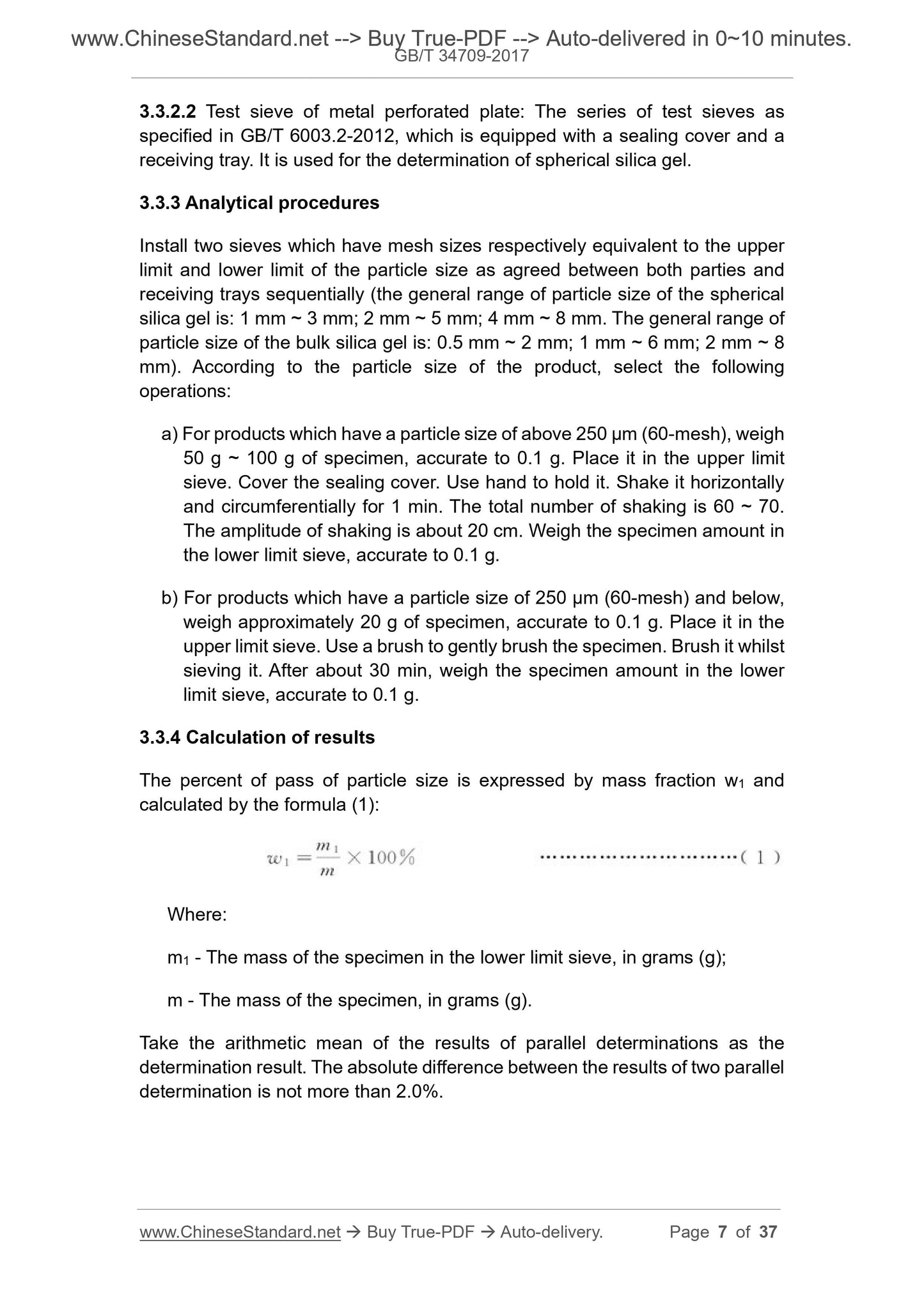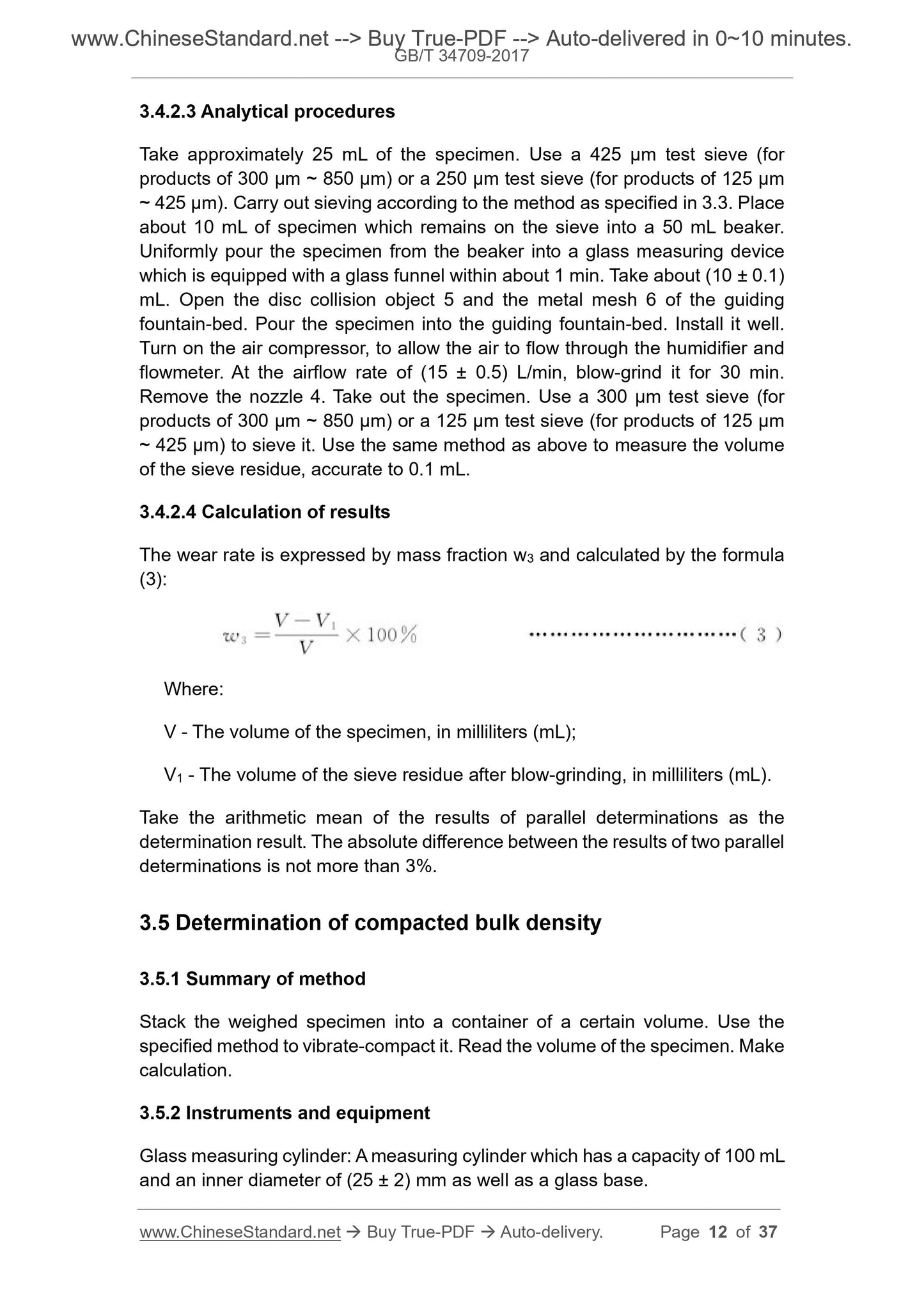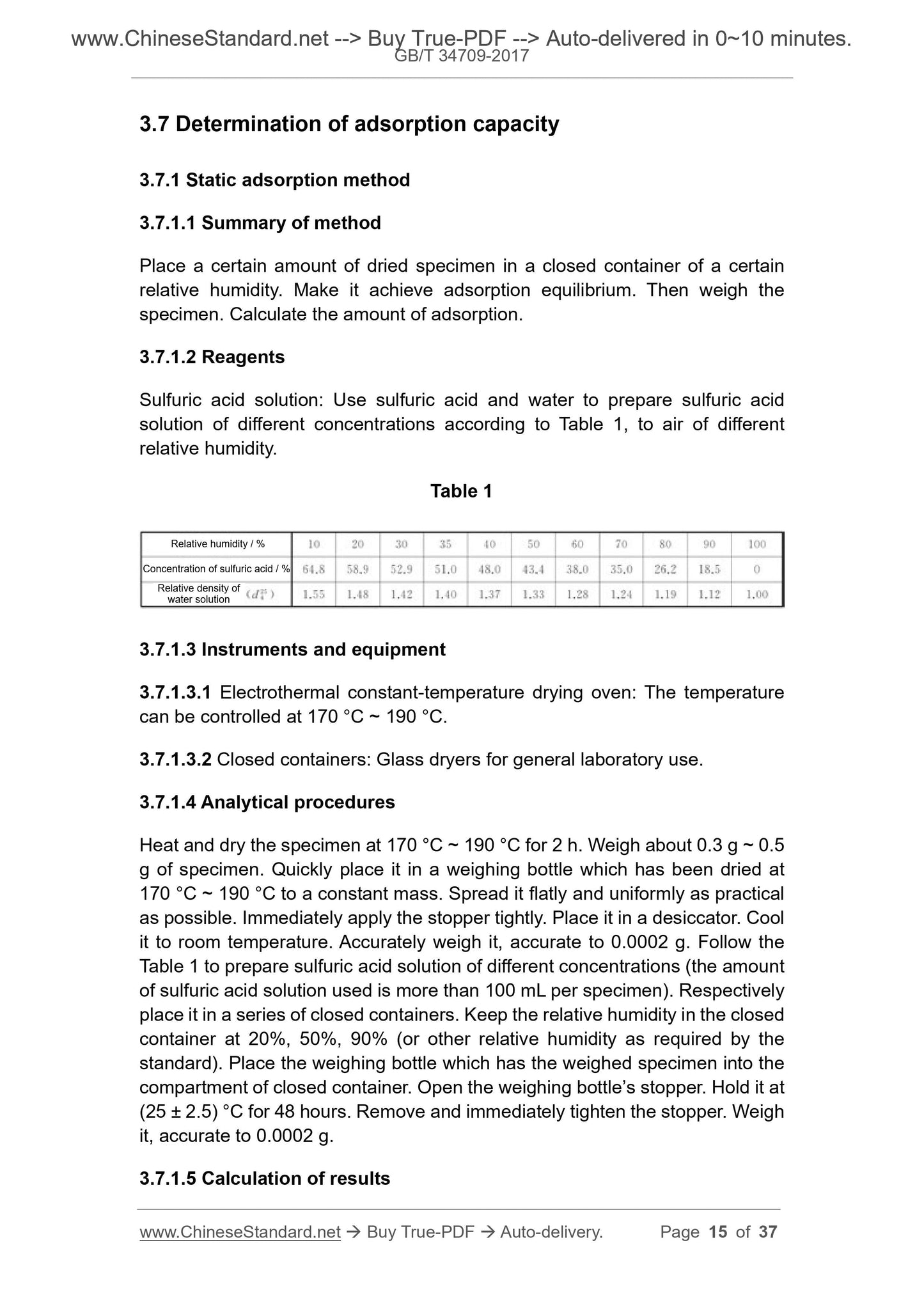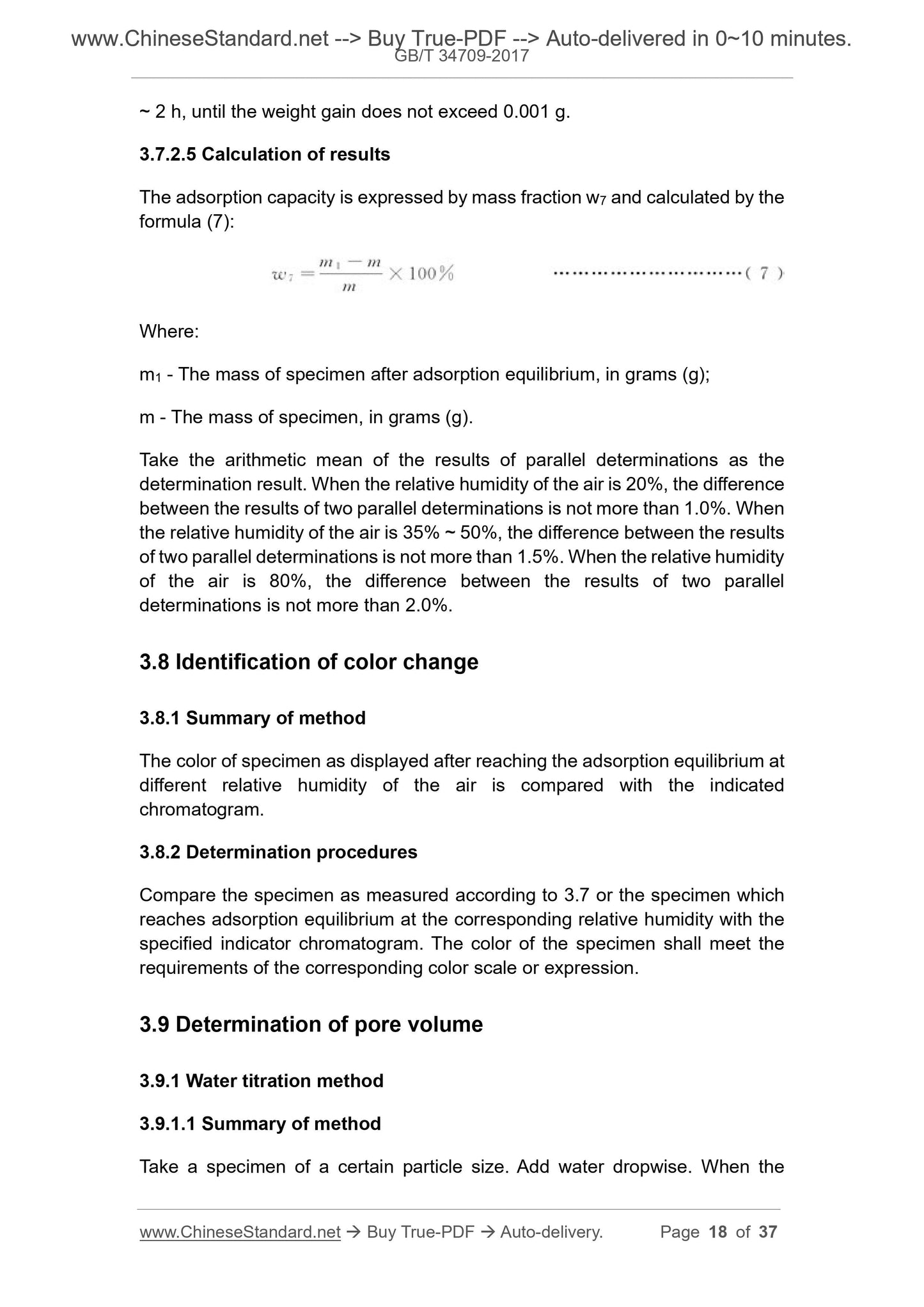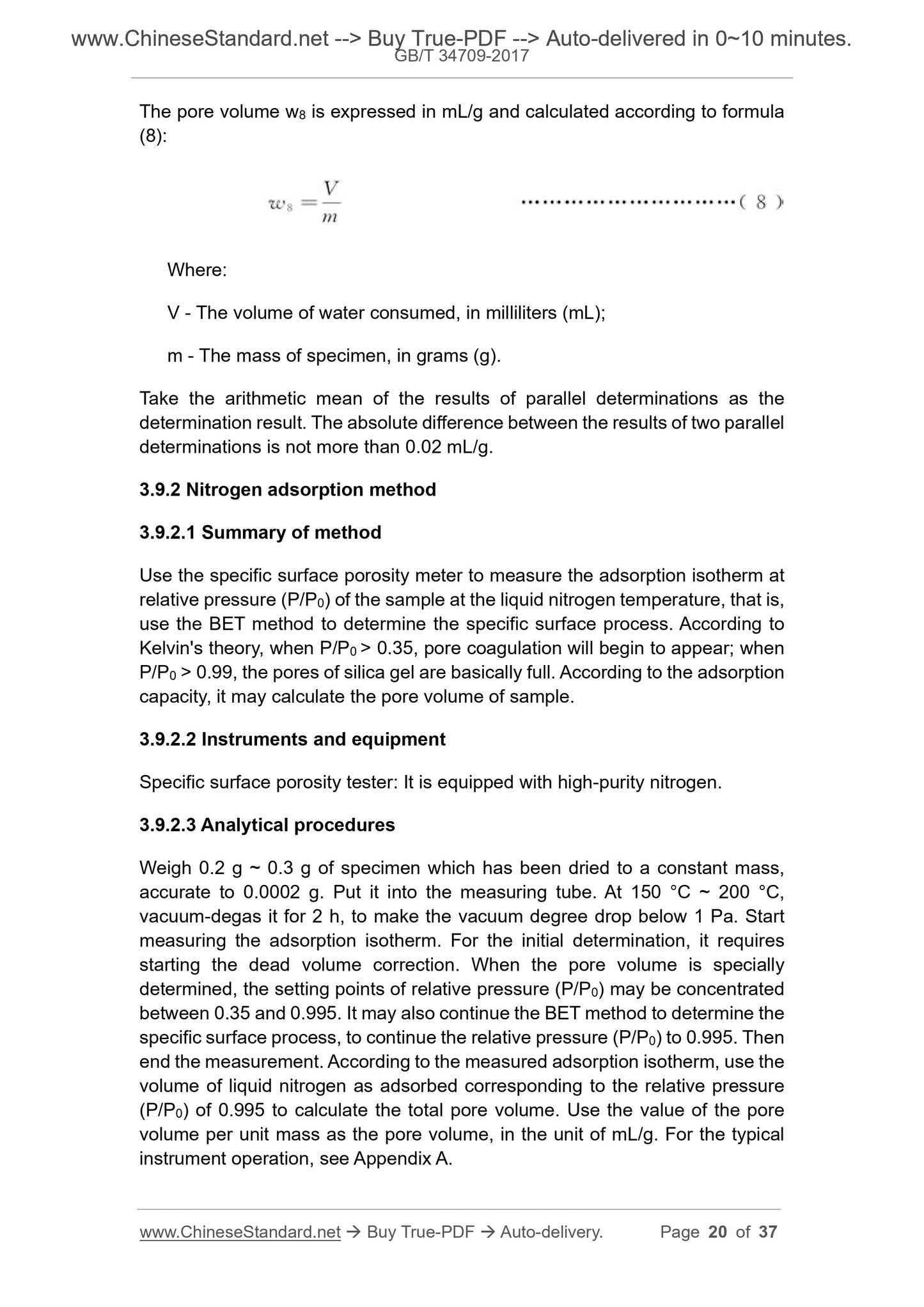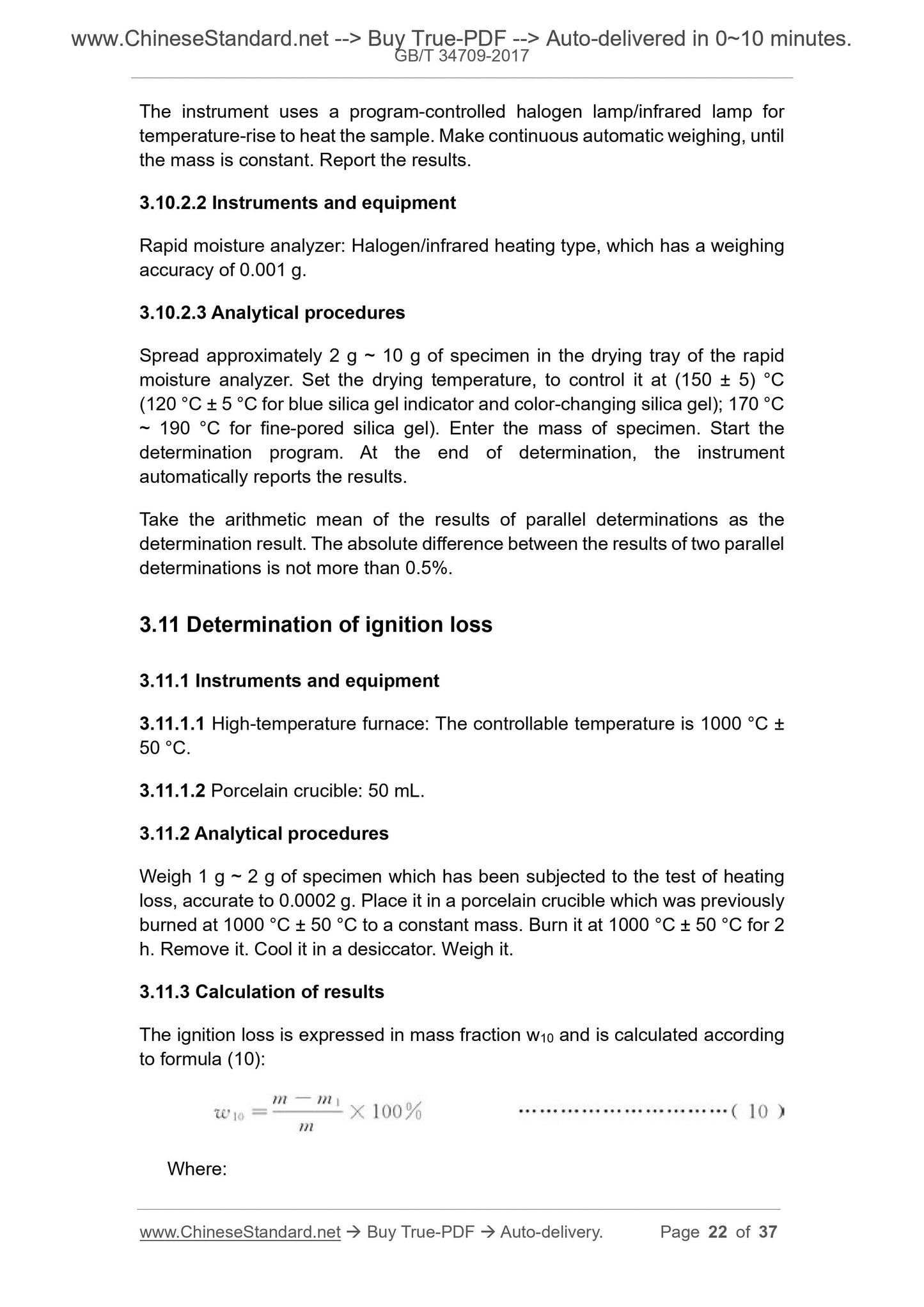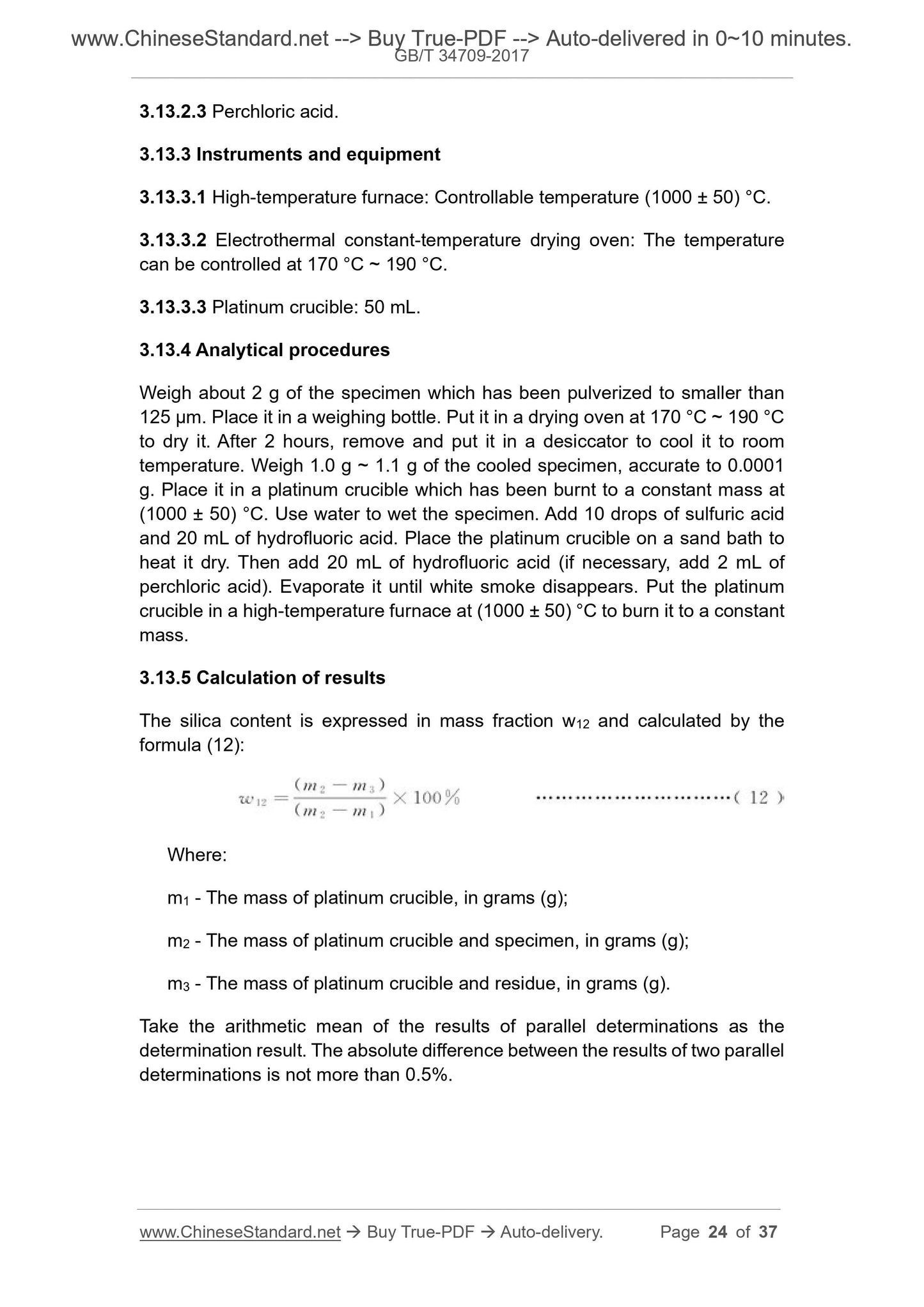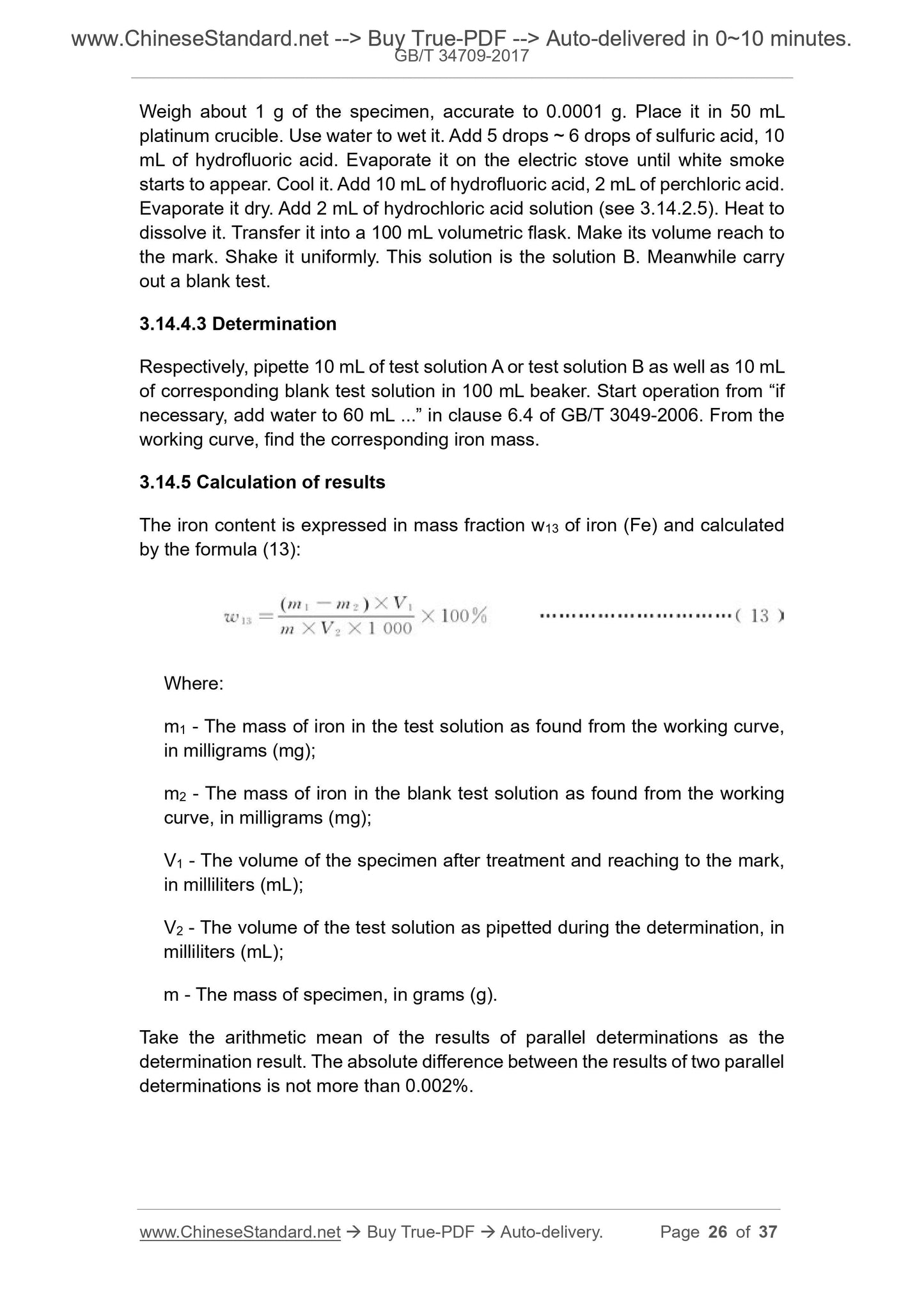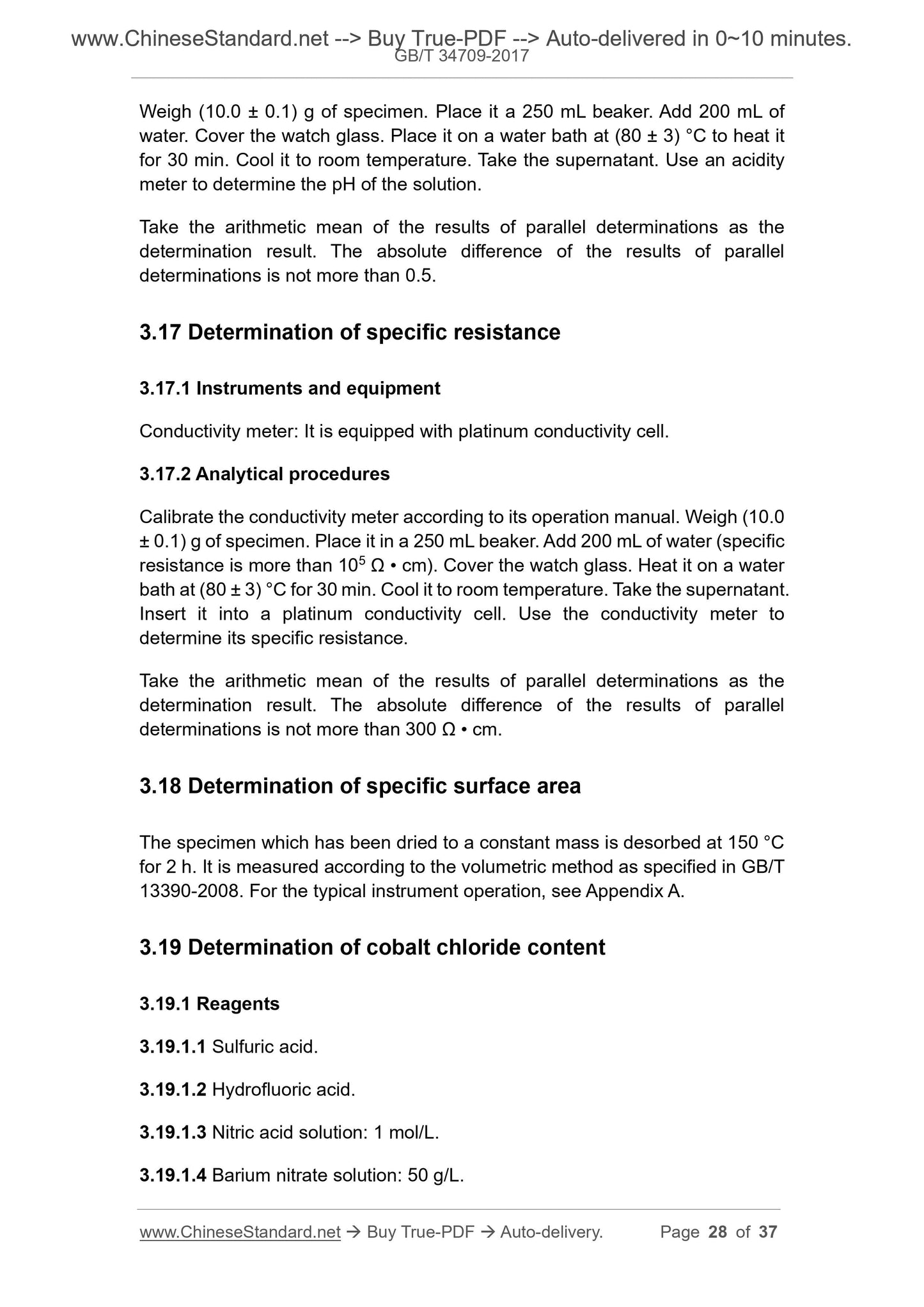1
/
of
12
www.ChineseStandard.us -- Field Test Asia Pte. Ltd.
GB/T 34709-2017 English PDF (GB/T34709-2017)
GB/T 34709-2017 English PDF (GB/T34709-2017)
Regular price
$170.00
Regular price
Sale price
$170.00
Unit price
/
per
Shipping calculated at checkout.
Couldn't load pickup availability
GB/T 34709-2017: General test method for silica gel
Delivery: 9 seconds. Download (and Email) true-PDF + Invoice.Get Quotation: Click GB/T 34709-2017 (Self-service in 1-minute)
Newer / historical versions: GB/T 34709-2017
Preview True-PDF
Scope
This standard specifies the test methods for silica gel series products.This standard applies to the series product such as type-A silica gel, type-C
silica gel, microsphere silica gel, color-changing silica gel, indicator silica gel,
type-B silica gel, pressure-swing-adsorption silica gel, FNG water-resistant
silica gel, cat-litter silica gel, additive silica gel, macro-porous silica gel.
Basic Data
| Standard ID | GB/T 34709-2017 (GB/T34709-2017) |
| Description (Translated English) | General test method for silica gel |
| Sector / Industry | National Standard (Recommended) |
| Classification of Chinese Standard | G10 |
| Classification of International Standard | 71.060.01 |
| Word Count Estimation | 30,365 |
| Date of Issue | 2017-11-01 |
| Date of Implementation | 2018-05-01 |
| Issuing agency(ies) | General Administration of Quality Supervision, Inspection and Quarantine of the People's Republic of China, Standardization Administration of the People's Republic of China |
Share
